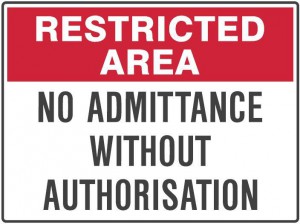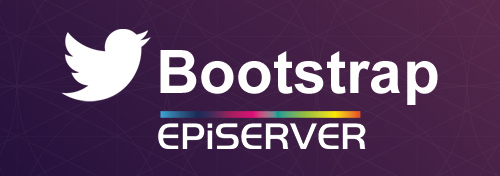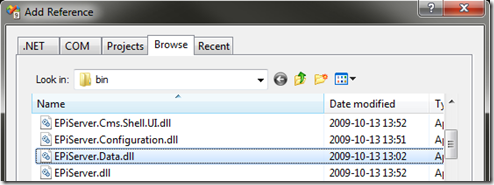 When you are building a website you will sooner or later want to build in some kind of Identification and Authorisation control to make sure not everyone can change your website or see sensitive information. In this tutorial I will show you how to build in simple Identification and Authorisation in your ASP.NET MVC website.
When you are building a website you will sooner or later want to build in some kind of Identification and Authorisation control to make sure not everyone can change your website or see sensitive information. In this tutorial I will show you how to build in simple Identification and Authorisation in your ASP.NET MVC website.
Tag Archives: asp.net
EF: Model vs Database vs Code First approach
When I First heard about the Entity Framework I thought there was only one correct way of implementing it and that is using the Code First approach. Now I am not that sure anymore. In this article I will explain the various approaches and their advantages and disadvantages.
URL Rewriting in EPiServer 6
Today I was working on a project that uses EPiServer version 6. As you probably know EPiServer 6 is still using webforms, not MVC. For SEO optimalisation we needed to rewrite incoming URL’s to make them uniform. For example all these URL’s should go to the same page
/en/Some-Interesting-Page
/Some-Interesting-Page
/en/some-interesting-page
For SEO it is important that there is only one valid URL. Other URL’s should throw a statuscode 301 and redirect to the correct url. For this I needed to do some URL rewriting in EPiServer.
Custom (nested) configuration for your C#/MVC application
Sometimes you want to store settings in a config file like web.config or app.config for your modules. In this small tutorial I will show you how to do that. I will not only show you how to define your own sections but also how to put this config in a separate file.
Storing data using EPiServer 7.5 Dynamic Data Store
About Blobs and Accessing Media by code in EPiServer 7.5
In this post I take a look at what blob storage exactly is, why it could be interesting and how it works in EPiServer. By default EPiServer uses blob storage to store all its content. Further I take a look at how to access stored media assets from code and show them in a view and how to save an uploaded image as a blob in the Media panel.
Adding bootstrap to your EPiServer MVC project
 In this tutorial we will add Twitter Bootstrap to our EPiServer project and we will create some base classes and our first ViewModel. Further I will explain the purpose of these base classes and the need for a ViewModel. Most of this is standard ASP.NET MVC so if you are already familiar with that you can probably skip this post.
In this tutorial we will add Twitter Bootstrap to our EPiServer project and we will create some base classes and our first ViewModel. Further I will explain the purpose of these base classes and the need for a ViewModel. Most of this is standard ASP.NET MVC so if you are already familiar with that you can probably skip this post.
Some helpfull EPiServer 7.5 code snippets
Since a couple of weeks when I started with EPiServer I experimented a lot. Here is a quick summary of some code fragments that I found on the internet that can be very usefull in some cases. I am not going into detail about these code fragments because honestly I dont understand all of it (yet).
Starting your first EPiServer 7.5 MVC project
Welcome to my first blog where I will start explaining how to create a simple website that uses EPiServer 7.5 as CMS. In the next tutorials I will extend the functionality of the website and I will dive deeper in more advance topics related to EPiServer. I assume that you have basic knowledge about the CMS itself. In other words that you know how to work with the CMS itself.

